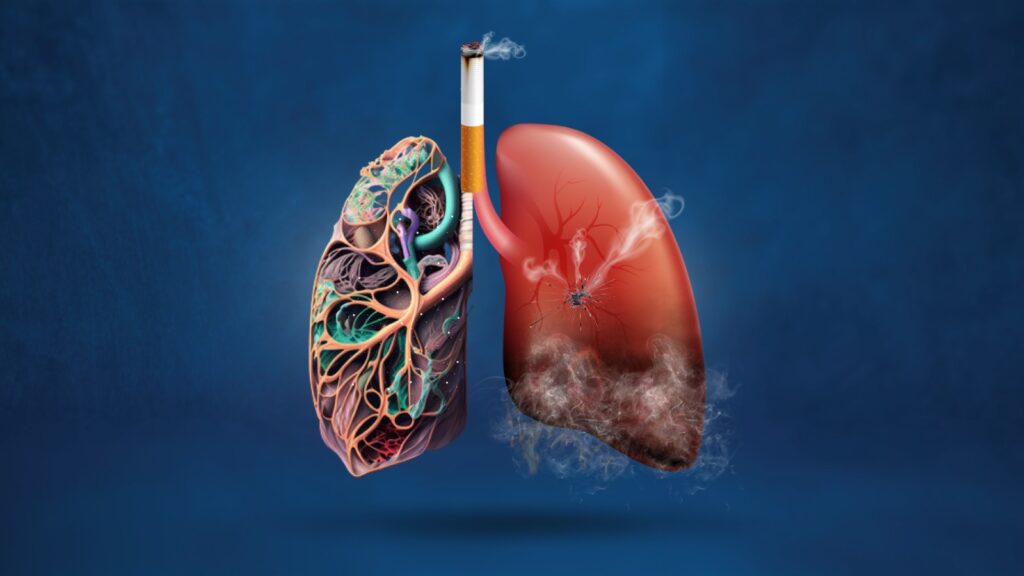Does Smoking Cause High Cholesterol?

Smoking has a significant effect on the arteries, which can cause high cholesterol. People with health issues regarding cholesterol should avoid smoking at all costs. As smoking does affect your cardiovascular system, it causes damage to your arteries, constricting blood vessels and creating plaques that block blood circulation in your body. Smoking can also cause heart failure and stroke. If you’re addicted to smoking and can’t quit or you’re worried about your overall health because of smoking. Studies have shown that people who smoke cigarettes, weed, pipes, and hookahs and vape electronics develop lung diseases in the long run. Seek help at your local rehabilitation center to find strategies to quit or reduce the amount of smoking. Another way I found that is very helpful for your bad cholesterol is to follow this guideline for exercising to lower your low-density lipoprotein (LDL, the bad cholesterol). Additionally, a heart-healthy diet can help reduce cholesterol if you have a hard time quitting smoking. People who eat healthy food have less plaque buildup in their arteries. So, how does smoking impact your cholesterol level? A few tips explain the reasons for smoking cigarettes, weed, pipes, hookahs, and electronic vape can cause high cholesterol. Smoking has serious effects on the arteries, leading to various cardiovascular diseases. Here’s how it impacts them:

1. Increased Blood Clot Risk: Smoking makes blood sticky and clot, which can block blood flow and lead to heart attacks or stroke.
2. Plaque Buildup (Atherosclerosis) Plaque, composed of fat and other substances, hardens over time and builds up to destroy the lining of the arteries, restricting blood flow.
3. Narrowing of Arteries: Plaque constricts the blood vessels to make them stringy and blocks the arteries for the blood to flow, causing high blood pressure and further damage to the cardiovascular system.
Reduced oxygen supply: Smoking affects cholesterol and cardiovascular health in several harmful ways. When a person smokes, carbon monoxide from cigarette smoke binds to hemoglobin in red blood cells, reducing the amount of oxygen that reaches tissues and organs. This oxygen deprivation forces the heart to work harder to pump blood, increasing stress on the cardiovascular system.
Smoking has a detrimental impact on cholesterol levels, contributing to an increased risk of cardiovascular disease. When a person smokes, harmful chemicals, such as nicotine and carbon monoxide, enter the bloodstream, leading to oxidative stress and inflammation in the blood vessels. This process damages the endothelium, the delicate lining of the arteries, making it easier for low-density lipoprotein (LDL), commonly known as “bad cholesterol,” to adhere to the arterial walls and form plaques. Smoking not only raises LDL cholesterol but also reduces the levels of high-density lipoprotein (HDL), often referred to as “good cholesterol,” which plays a crucial role in removing excess cholesterol from the bloodstream and preventing plaque buildup. Additionally, smoking increases triglyceride levels, further compounding the risk of atherosclerosis, a condition characterized by narrowed and hardened arteries that can lead to heart attacks and strokes. The combination of increased LDL, decreased HDL, and elevated triglycerides creates a dangerous lipid profile that significantly accelerates the development of cardiovascular disease. Moreover, smoking-induced inflammation stimulates the immune system to produce white blood cells, which can contribute to further plaque instability and increase the likelihood of clot formation. Given these harmful effects, quitting smoking is one of the most effective measures to improve cholesterol levels, enhance overall cardiovascular health, and reduce the risk of life-threatening complications.